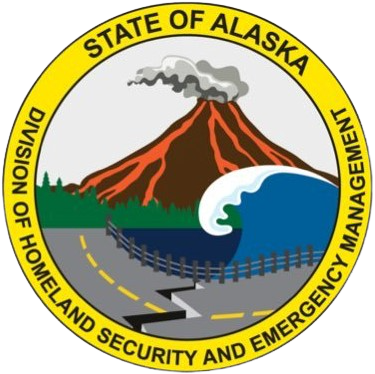SEOC Preparedness Levels
DHS&EM has established four SEOC preparedness levels detailed below
- Level 1 indicates routine operations. Occurring and forecasted events present little, if any threat. DHS&EM Operations Section conduct normal activities. This includes evaluating the situation and publishing the Daily Situation Report. Events are being managed successfully by the appropriate agency with no requirement for additional support.
- Level 2 indicates a heightened sense of awareness. Occurring or forecasted events include a potential or present threat. Examples may include weather or river watch/warning, volcano status changes, multiple wildland fire ignitions, extended search and rescue, or a law enforcement action. DHS&EM may field reconnaissance teams. SEOC may mobilize additional staff, continue to evaluate situation and publish Daily Situation. Unless activated to fill a SEOC position, routine DHS&EM staff remain in place. Events exceed routine, but responsible offices are able to manage with additional support from commonly used sources.
- Level 3 indicates an actual event occurred or may be imminent. Examples may include river flooding disrupting public transportation, extended search and rescue requiring inter-agency support, a wildland fire requiring evacuation and shelter planning, or raised State Homeland Security Threat Level. Local emergency operations center may be activate. Local disaster may be declared. DHS&EM may send out an incident management team to react to a local crisis. Any situation clearly beyond a local community’s capability to respond will prompt elevation of SEOC operations to this level. The SEOC is staffed and open extended hours to satisfy event requirements. DHS&EM may require augmentation from other agencies, both for field teams and in the SEOC. DHS&EM may deploy Preliminary Damage Assessment (PDA) teams to the incident. Daily Situation Reporting requirements continue. Additional information reporting requirements may be necessary to keep government(s) aware of situation(s). The Disaster Policy Cabinet and an All Hazard Multi-Agency Coordination (MAC) Group may be activated. FEMA Region X is notified.
- Level 4 indicates response to a major life threatening and/or property damaging event. Examples include a river flood, sea storm surge or tsunami displaces residents and damages structures, a wildland fire requires evacuation and sheltering of residents, or a damaging earthquake occurs. Event exceeds agency or local emergency management capability and requires significant mobilization of statewide emergency resources from agencies in multiple levels of government. Disaster Policy Cabinet (DPC) is activated and meets to review situation. A MAC Group is usually formed to ensure inter-agency cooperation and coordination and meets regularly. Usually a State disaster declaration is in effect or has been recommended to the Governor. DHS&EM is fully involved in support and coordination of event(s). The SEOC operates 12 to 24 hours per day with augmentation from State agencies and other assisting agencies. DHS&EM staffing is adjusted by recall of personnel on routine annual leave and travel status. Incident Management Team(s) are likely mobilized. DHS&EM may require substantial augmentation from other agencies, both for field teams and in the SEOC. Information reporting is increased to maintain situational awareness for the Governor’s office and DPC. FEMA Region X is notified of the situation and may provide a liaison in the SEOC. If the event exceeds state capability and requires mobilization of Federal resources, a request for a Presidential Declaration is submitted to FEMA Region X.
Current preparedness level will be identified on DHS&EM Daily Situation Updates. SEOC will monitor the statewide situation and recommend the appropriate preparedness level each day. The decision to go to Level 3 or above normally requires consultation with Division Leadership. The parameters for each level are general guidance only. Criteria used for establishing the preparedness levels may include:
- Actual or forecasted weather events that may cause significant impacts to the Alaskan people and their property,
- Occurring or predicted geologic events that can cause impacts to people, property and transportation systems [Normally these will be volcanic eruptions or increases in seismicity. Earthquakes could change preparedness levels, however that will normally occur after the event.],
- Wildland fire activity throughout the State which impacts DHS&EM response capabilities,
- Availability of emergency response and recovery resources statewide, both people and equipment [Normally, DHS&EM will first turn to the Division of Forestry for augmentation in the SEOC.],
- Significant events occurring in communities that may impact their response capabilities [examples include power system failures, water and sewer system problems, large fires, etc.].
